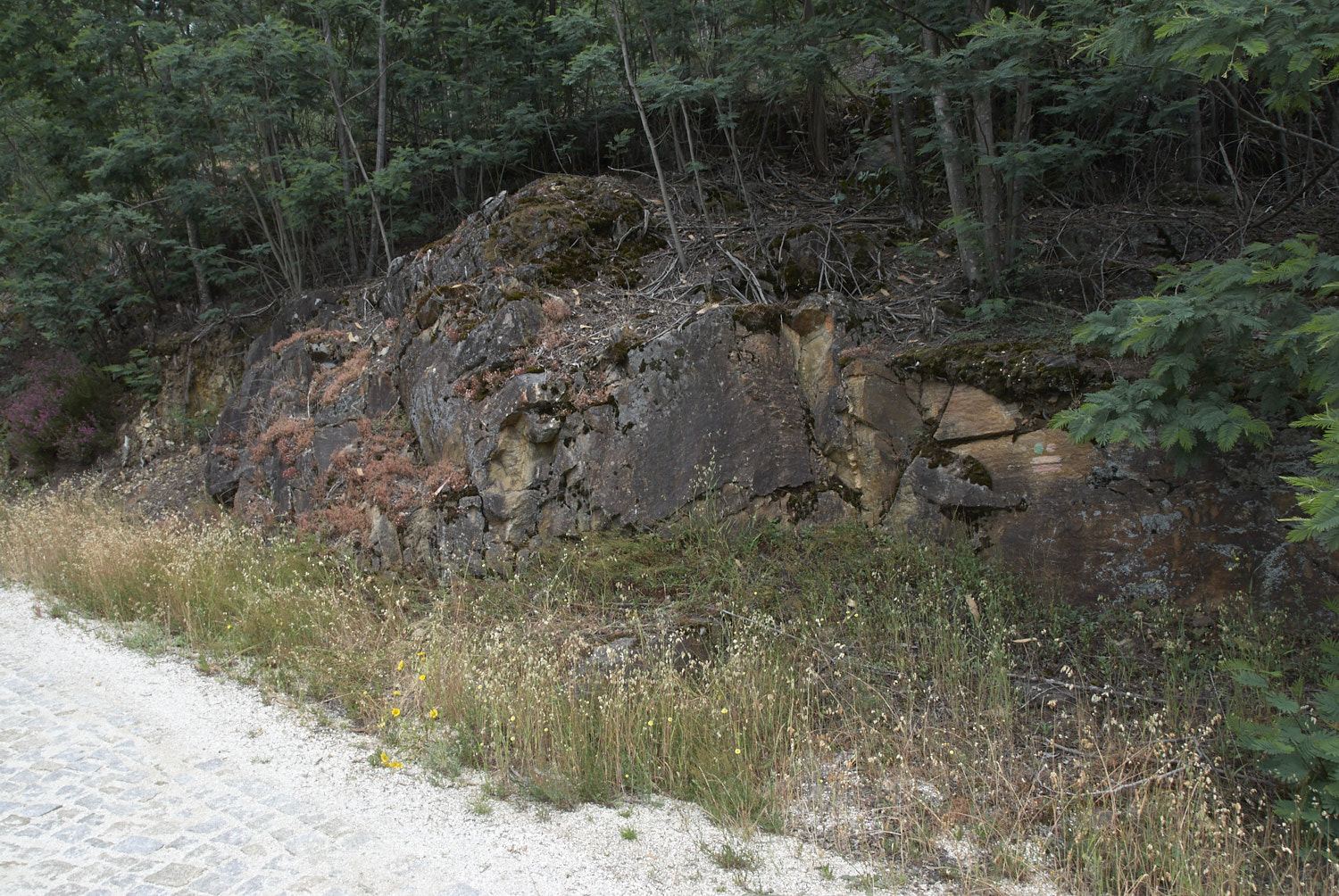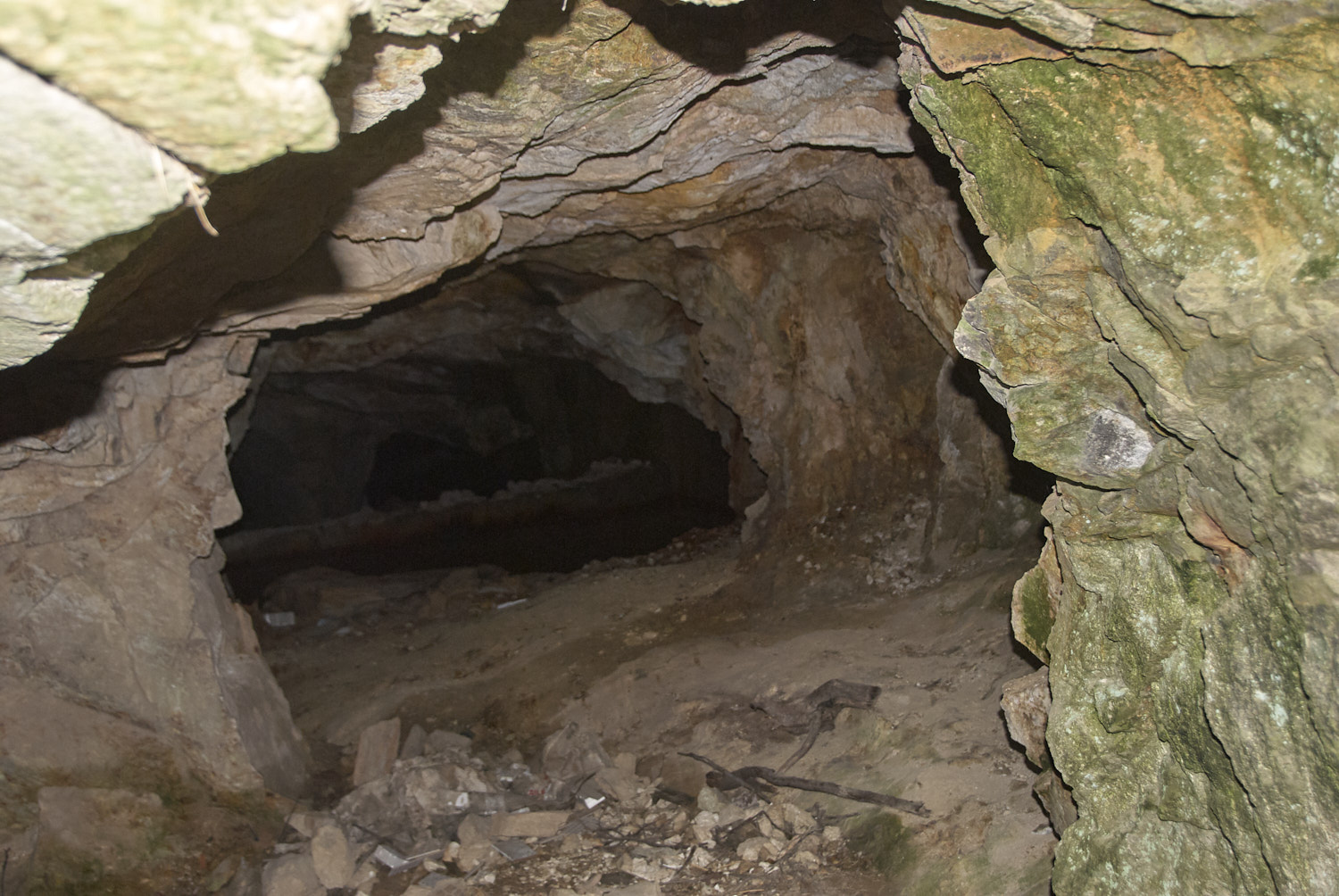justificação do valor científico
Vieiros Mine is located in the CIZ of Iberian Massif, and it is one of the most easily accessible Tin Portuguese Mines by Highway A4 and local roads. In this locality we can see very nice outcrops of a pegmatite field and underground work together with the well preserved mining installations. The Mine is representative of the numerous Tâmega tin-bearing pegmatite exploitations, and have one of the most completed list of recognised minerals (Cotelo Neiva 1992). It has also a great amount of available data, resulting from different Master and PhD thesis (Maijer 1965, Helal 1992, Teixeira 2005) and technical publications (Pereira 1989, Cotelo Neiva 1992, Madureira et al 2001).
The metamorphic rocks are grouped into two rock-stratigraphic units. The Graphite-schist Formation forms a thick, monotonous sequence of metamorphosed graphite-bearing pelitic rocks with locally a few calcareous lenses and with intercalations of massive amphibolites and anthophyllite-cordierite rocks. The overlying Sericite-schist Formation forms a thick and rather monotonous, essentially graphite-free sequence of metamorphosed pelitic and psammitic rocks with local intercalations of amphibolitic rocks of banded appearance and of massive anthophyllite-cordierite rocks. The strongly folded metasedimentary rocks are presumably all of Silurian
Age (Maijer 1965).
Three different phases of metamorphism affected the metamorphic rocks: (i) a phase of low-grade regional metamorphism, (ii) a phase of contact-metamorphism, (iii) a phase of retrogressive metamorphism. Three different zones of contact-metamorphism, of increasing grade towards the granite contacts, are distinguished in
the metamorphosed pelitic rocks: a biotite zone, a cordierite-andalusite(chiastolite) zone and a sillimanite zone. A well-developed schistosity, mostly parallel to the bedding, is (as an effect of the earlier phase of low-grade regional metamorphism) preserved in the lower metamorphic biotite zone, but it is increasingly obliterated
in the massive to schistose hornfelses in the very wide cordierite-andalusite(chiastolite) zone and absent in the massive hornfelses of the very narrow sillimanite zone (Maijer 1965).
All the pegmatites occur in cordierite-andalusite(chiastolite) zone of metasediments (usually these discordant pegmatite veins have sharp and straight contacts) surrounding the Amarante Granite that consists mainly of a coarse-grained porphyritic biotite granite with a varying amount of inclusions of granitic and of dioritic rocks, as minor pegmatite and aplite bodies or quartz veins.
In this Vieiros pegmatite field, veins have a somewhat sinuous course with strikes varying from about N-S to about N 50º E, while the dip is often around 40º to the W or NW. Sometimes the veins seem to be arranged en echelon.
The pegmatites are characterized by strong variations in texture. Usually they are porphyritic with large, white to flesh-coloured megacrysts of K-feldspar, measuring up to about 10 cm in size but occasionally reaching sizes of up to several dm. In all the pegmatites albite is the main mineral. The matrix (grain size usually 0.5- 10 mm) consists mainly of albite, muscovite and quartz. More or less regularly dispersed in this matrix occurs equally fine-grained accessory minerals containing Sn, Li, Be, Nb-Ta. B, etc. The fine-grained albite-muscovite-quartz matrix has a saccharoidal appearance (Maijer 1965),
Large quartz cores and graphic intergrowths of K-feldspar and quartz have not been observed. Granophyric intergrowths of albite and quartz, and replacement phenomena are common. Apart from the occurrence of a narrow border zone in which the albite crystals are oriented with their longest dimensions normal to the vein walls, no distinct zonal structure was detected macroscopically in any of the pegmatite veins. However, a numerous list of minerals were distinguished (Maijer 1965, Neiva 1992): albite, muscovite, quartz, K-feldspar as main constituents, a large number of accessories: sillimanite, andaluzite, columbite-tantalite, zinnwaldite, zircon, rutile, nigerite, gahnite, chryso-beryl, spodumene, tourmaline, cassiterite, beryl and chlorites (cookeite), apatite, amblygonite-montebrasite and late phosphates comprise eosphorite-childrenite, goyazite, apatite, augelite, lazulite, and vivianite,
sulphides are generally rare and comprise arsenophyrite, pyrite, sphalerite, galena,
bismuthinite, chalcopyrite, pyrrhotite and associated very rare native gold, copper and bismuth, supergene minerals are scorodite, covellite, limonitic material, metatorbernite and possibly some quartz and vivianite, magnetite, hematite, ilmenite, rutile and microlite. Recently Teixeira & Lima (2005) found masses of petalite.
The cassiterite weight grade was calculated between 0,1% and 0,3% (Maijer 1965, Neiva 1992)
AMBT 2008 “O Património Natural como Factor de Desenvolvimento e Competitividade Territoriais no Baixo Tâmega” Relatório de Progresso.
Cotelo Neiva, J. M. (1992) “O Jazigo Pegmatítico de Vieiros (Amarante) com Cassiterite, Columbotantalite e Minerais Litiníferos”. Relatório Inédito. 63pp.
Helal, Benbadis (1992) “ Granitoides, granites à metaux rares et hydrothermalisme associe: géologie, minéralogie et géochimie de plusiers suites tardi-hercyennes (Nord du Portugal)”. École Nationale Supérieure des Mines de Saint-Étinne et École Nationale Supérieure des Mines de Paris. 497 pp
Maijer, C. (1965) “Geological investigations in the Amarante region (Northern Portugal) with special reference to the mineralogy of the cassiterite-bearing albite pegmatites”. Grafisch Centrum Deltro. Rotterdam. 155 pp.
Novais Madureira C. M., Miranda H.S.B, Madureira A., Futuro A., Leite A. (2001) “Parque Tematico e Museu Mineiro de Vieiros” Relatório Inédito. 29 pp
Pereira, E. (1989) “Notícia Explicativa da Folha 10A - Celorico de Basto”. Serviços Geológicos de Portugal. Lisboa.
Outros valores e sua justificação
Traditional mining village not very well preserved but without new buildings and with beautiful mountain panorama (Alvão Mountain).
It’s already used during the activity “Geology in the Summer” (Third Edition).
There’s a project working in the Natural Heritage of this area, were Vieiros was choose as the best Ancient Mine in the studied area (AMBT 2008)


